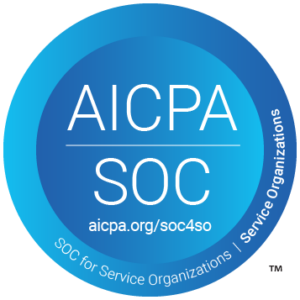Generative AI (Gen AI) is no longer a futuristic concept; it’s a present-day reality shaping industries across the globe. From healthcare to finance, and now education, the impact of Gen AI is both profound and promising. At Mainstay, we’ve integrated Gen AI into our platform to optimize usability and manage our knowledge base efficiently. However, our commitment to student success is firmly rooted in human centered practices—crafted through a decade of research and proven strategies.
As educational institutions increasingly explore the possibilities of Gen AI, understanding how to harness its potential effectively is critical. We recently wrote about using AI in the service of Student Success, and this post aims to guide you through the essentials of using Gen AI specifically, providing practical examples and best practices for crafting effective AI prompts.
First, Keep It Simple
Gen AI excels when given clear, concise instructions. This is not just a best practice; it’s a necessity. Leading companies like Apple and Anthropic have demonstrated that simplicity in prompts yields the most effective and reliable AI responses. The reason is straightforward: Gen AI works by identifying and completing patterns based on its training data.
Imagine beginning with the most basic prompt: “write a story.” From there, Gen AI refers to its available training data (the sources of information on which its predictions are based) to complete the task. With no other limitations, it uses all available training data related to writing stories.
Adding a layer of complexity (i.e. “write a story about space exploration”), however, changes the pool of available training data. Now, the AI’s available training data is restricted to writing stories about a certain topic. This is advantageous because it surfaces valuable expertise.
You might think this suggests a linear relationship between the amount of detail used and the quality of Gen AI’s results, but it’s more like a bell curve. You can think of it like a google search: too few words and the results are too broad; too many, and you won’t find any matches at all. The right balance is somewhere in the middle.

As Mainstay CEO & Co-Founder, Andrew Magliozzi, puts it: “prompt engineering essentially functions like sculpting. The prompt has the effect of whittling down the large language model into a more refined structure much like a sculptor finding an object within a large piece of marble.” Whittle too far and there’s nothing left.
With that in mind, educators can use Gen AI to improve focused administrative activities, such as reviewing assignments, offering feedback, and career counseling (perhaps just not all at the same time). So, we can build AI assistants and tasks with specialties, but we should focus the scope of their work. In the famous words of Steve Jobs: “do one thing well.”
Next, Focus on the Problem
Before exploring the practical applications of generative AI in education, consider the specific challenges you face in your daily work. Our recent New Rules of AI for Student Success white paper includes a “Problem Solving Framework” that can help with this step.
Whether it’s responding to student inquiries, providing academic support, or guiding career development, there are tasks that require not just efficiency but also a consistently supportive and empathetic approach.
Example: Consistent Tone in Responses to Students
Imagine you’re part of an advising team, and you’re tasked with responding to a large volume of student emails. Each student’s situation is unique, but maintaining a warm and encouraging tone in every response is crucial to fostering a sense of support and belonging. This is where Gen AI can shine—not by automating your job, but by enhancing your ability to deliver high-quality, consistent responses.
Picture this: a student reaches out with concerns about their academic performance. As an advisor, you want to respond in a way that not only addresses their concerns but also reassures them that they are not alone. Gen AI can help you craft this response by suggesting language that is empathetic, encouraging, and aligned with the supportive culture of your institution.
For example, you could input a draft of your response into the AI, asking it to refine the tone to ensure it’s as supportive and reassuring as possible. This allows you to maintain the personal connection with the student while ensuring that your messaging remains consistently positive and empowering.
By focusing on how Gen AI can enhance the quality of your interactions—rather than replace them—you can better leverage this technology to support your work and the success of your students. Now, let’s explore the practical applications and best practices for using Gen AI in educational settings.
Examples of Using Gen AI in Higher Education
1. Targeted Academic Support
Feedback on Assignments: Gen AI can be used to provide constructive and precise feedback, focusing on one or two key areas per assignment to avoid overwhelming students.
- Example Prompt: “Provide feedback on the clarity and argument strength of this essay.”
2. Responding with Empathy
Consistent and Compassionate Communication: Gen AI can be used to ensure that all student communications are responded to with a consistent tone of empathy and understanding. This is particularly useful for maintaining a supportive atmosphere, especially when multiple staff members handle student inquiries. By using a uniform set of standards for responses, institutions can ensure that every student feels heard and supported.
- Example Prompt: “Given the following student message, generate an empathetic response that acknowledges their concerns and provides a solution. [Insert student message]”
- Input Example: “I’m really stressed about my upcoming exams and I don’t know how to manage my time.”
- AI-Generated Response Example: “I understand how overwhelming exams can feel, and it’s great that you’re reaching out. Let’s work together to create a study plan that balances your workload and gives you the confidence to succeed. Remember, taking small, manageable steps can make a big difference, and we’re here to support you every step of the way.”
3. Career Counseling and Development
Career Path Exploration: Gen AI can be tailored to assist students in exploring career options by focusing on their interests and skills, providing tailored advice that helps them identify potential career paths.
- Example Prompt: “Suggest potential career paths for a student interested in environmental science with strong research skills.”
4. Administrative Efficiency
Streamlined Scheduling and Planning: Gen AI can help faculty and administrative staff manage their schedules, set priorities, and handle routine tasks more efficiently, thus freeing up time for more complex responsibilities.
- Example Prompt: “Organize the advisor’s meeting schedule for the week, prioritizing student sessions and administrative meetings.”
Best Practices for Crafting Effective Gen AI Prompts
1. Clarity and Simplicity
As noted above, the effectiveness of Gen AI hinges on the clarity and simplicity of the prompts provided. When prompts are too vague or too complex, the AI may generate responses that are either too broad or miss the mark entirely.
Think of crafting prompts as striking the right balance—similar to a well-constructed search query. A clear, straightforward prompt guides the AI toward producing the most accurate and relevant output. For example, instead of asking, “Help with this assignment,” a more effective prompt might be, “Provide feedback on the clarity and argument strength of this essay.”
This direct approach ensures the AI understands exactly what is required, allowing it to generate a precise and helpful response.
2. Contextual Relevance
Providing the right amount of context is key to generating meaningful AI outputs. Context helps the AI understand the specific situation or problem at hand, enabling it to tailor its responses more effectively.
For example, if you’re asking the AI to assist with responding to a student’s concern about their academic performance, including details like the student’s previous performance or any specific challenges they’ve mentioned will lead to a more personalized and relevant response.
However, be mindful not to overload the AI with unnecessary details—focus on what’s most relevant to the issue at hand. This balance ensures the AI remains helpful without becoming bogged down by extraneous information.
3. Iterative Testing and Refinement
Effective use of Gen AI often requires an iterative approach. Start with a basic prompt and observe the AI’s response. If the output isn’t quite right, refine your prompt to provide more specific guidance or context.
This process of testing and refining helps to fine-tune the AI’s outputs, ensuring they align with your needs. For instance, if the AI’s initial response to a student inquiry lacks the empathetic tone you’re aiming for, you might adjust the prompt to explicitly request a more supportive tone.
Over time, this iterative approach will not only improve the quality of the AI’s responses but also help you become more adept at crafting prompts that yield the best results.
Balancing AI with Human Centered Practices
At Mainstay, we believe that technology should serve to enhance the unique strengths of human interaction, not overshadow them. Gen AI offers powerful capabilities that can streamline tasks, maintain consistency, and provide timely support, but the real impact comes when these tools are used in conjunction with the empathy, insight, and personal connection that only humans can provide.
As you integrate Gen AI into your educational practices, remember that its greatest potential lies in augmenting your ability to support students—not in replacing the essential human elements of your work. Whether it’s responding to a student’s concerns with an empathetic tone, providing tailored academic advice, or helping students explore career paths, Gen AI can help you deliver these services more efficiently and consistently, while still allowing you to focus on the nuanced, relationship-building aspects of student engagement.
In this way, Gen AI becomes more than just a tool; it becomes a partner in your mission to guide students towards success, ensuring that every interaction is as meaningful and supportive as possible. By leveraging technology to enhance, rather than replace, human touch, we can continue to create environments where students feel valued, supported, and empowered to achieve their goals.



